|
The Cardinal Harmonic Tremolo is a great tremolo by Jon Patton that is based on the harmonic tremolo effects found on certain Fender amps 1960-1964. "It’s an unusual, and beautiful, combination of mild phasing and amplitude modulation". I decided to make a layout without the regular IC LFO and use the TAPLFO from Electric Druid insted (as suggested in the schematic). It was easier to make two separate board for the tremolo and LFO. The recommended vactrol VLT5C1 works best in this circuit. The 10K trimmers set the bias for the J201. Just turn them until it sounds good. :) The TAPLFO board is just a slightly modified version of the stand alone board I did before. Read more about the required HEX code and PIC programmer in my earlier Tap Tremolo post or visit Electric Druid.
2 Comments
This is discrete version of The Tube Reamer by Runoffgroove, a very stripped down Tube Screamer. Posting the Flying Guillotine Fuzz reminded me of the "Diode Compression Op Amp" by Joe Davisson, as used here insted of a 4558 IC. It's been reported to sound smoother. Maybe I'll have to built the IC version to compare. :) I found it a bit too bright and recommend Increasing the 33nF cap to 47nF for less highs.
Here is a layout for a very cool compressor. It's a DIY offering by HEXE Guitar Electronics and a original design based around the TDA7052A chip. Here is a demo-video by the creator Another great DIY offering from Björn Juhl of BJFE Electronics.
This is a simple clean booster that can boost alot. This is a very cool and versatile tremolo by Electric Druid. The signal path is taken from the Tremulus Lune, but the LFO is replaced with a digital chip with tons of features: Tap Tempo, 8 different waveshapes (even a random shape!) and a multiplier function. If you are new to digital chips that require code, read more in my Guitar to MIDI post. Have a look at my finished build here. Read more about this project and download the HEX code or buy the PCB/pre-programmed chip-kit here: http://www.electricdruid.net/index.php?page=projects.taplfo I also drew up this layout with only the LFO, Figured it might come in handy. For example to modulate the speed of a delay to create some pitchbend/chorusy effects... Hmmm, wonder how that random waveshape will sound. :o) I have not built this one yet, but it should be ok. Hook up A and B to any pot you want to modulate/replace. Use a regular LED and wrap it in heatshrink or tape with the LDR or use a vactrol. I used a VTL5C3 vactrol in my build.
Here's a very cool synthy sounding octave down / up invented by Slacker (the creator of The Echobase). Original thread here. I included the Octave up addon from the schematic aswell. I had to use shitloads of cuts and links in this layout, but at least I got it into a good size. :) I did have problems getting this one to work/track properly. Only the low E and A strings tracked and I had to hit the strings hard. Here is what I did... Probably not the best solution lol, but for now it's good enough until I have more time to try out other things. If you want to build it 1:1 with the schematic, just omit the 47K resistor. Here's a short soundclip of the circuit/layout (with my fix): I'm using humbuckers, neck pickup, mix at 50%, Octave up maxed and 2nd octave down selected.
A very cool sounding ring modulator by Carlin. Have a look at my completed build here. I put a 4.7nF cap between vol lug 1 and 3 (ringmod output - ground) on my build to tame some of the treble a bit. UPDATE: Now updated with a oscillator daughterboard to make it much more useful. :) On its own the Carlin Ringmod sounds kinda like a starved octave fuzz. To achieve the typical ringmod effect you have to connect an external tone-generator. Sadly not without the classic ringmod problem - carrier bleedthough (alot in this case). But my daughterboard takes care of that issue. My idea was to put the tone generator in the box with a in/out switch insted of having two inputs like the original. I also wanted the signal to gate when not playing. This is what I came up with and it's working great. it's a VCO (voltage controlled oscillator) controlled by a VCA (voltage controlled amplifier), which means that the VCA is triggered by the guitar signal and turns off the VCO when not playing - no more carrier bleedthough. :) The idea came from the Penfold Fuzz Unit circuit thanks to Moosapotamus video and the oscillator is taken from the LM13700 datasheet, modified for single supply and useful freqency range.
The "Mini-Muff" by Jack Orman is basically a Big Muff with two of the gainstages removed. It doesn't sound much like a Muff, but makes a surprisingly good overdrive/distortion.
Here's something fun that I found at diystompboxes.com (original thread here). It's a little circuit that converts your guitarsignal into MIDI language, so you can use your guitar with your favourite synths. :) It's monophonic, so it's not good for chords but works ok for single notes, leads, basses ect. It requires a specific PIC chip and PIC programmer hardware (such as pickit2), software, and code (downloads at the bottom of the post) to be written onto the chip, so it's a bit harder to do then your regular stompbox. More info below. This is what you will need:
All the info is taken from the diystompboxes forum. I just put together the important stuff here, so all credits to the original contributers at diystompboxes. :)
|
vero layoutsAll the layouts are Verified unless noted. Archives
February 2018
Categories
All
|
||||||||||||||
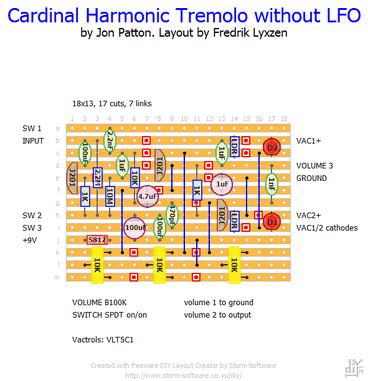

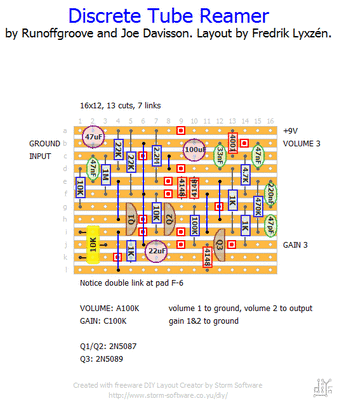



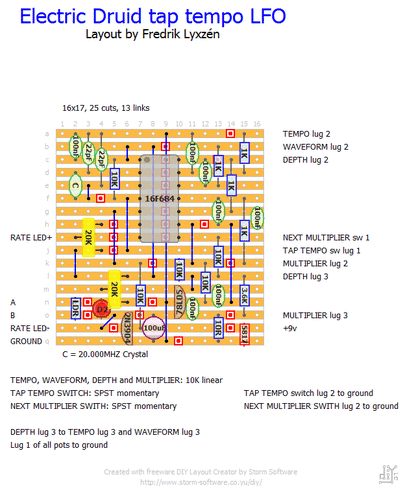


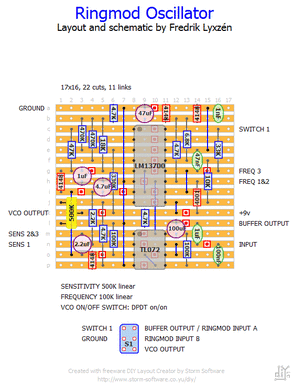
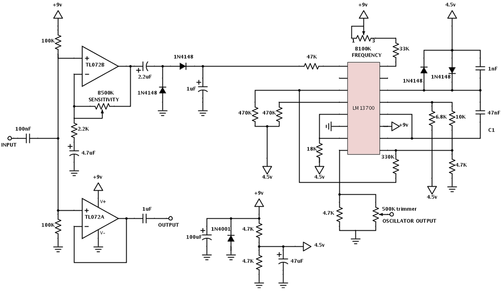



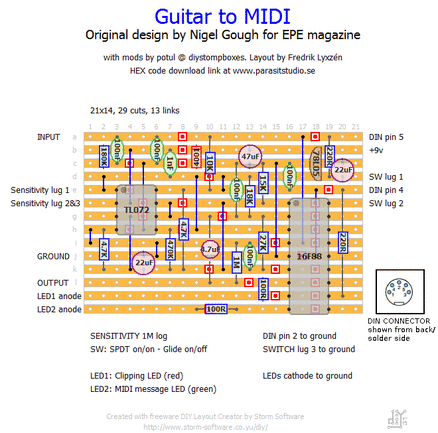
 RSS Feed
RSS Feed